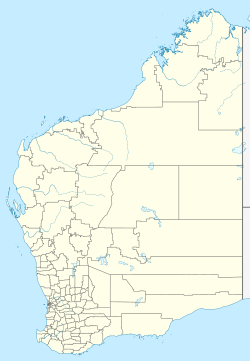Dattening | |
|---|---|
 Interactive map of Dattening | |
| Coordinates: 32°31′59″S116°53′35″E / 32.533°S 116.893°E | |
| Country | Australia |
| State | Western Australia |
| LGA | |
| Location | |
| Established | 1908 |
| Government | |
| • State electorate | |
| • Federal division | |
| Elevation | 320 m (1,050 ft) |
| Postcode | 6308 |
Dattening is a small town in the Shire of Pingelly, between Boddington and Pingelly in the Wheatbelt region of Western Australia.
During the 1890s a farmer named Norris Taylor sunk a well in the locality and the area was initially known as Taylor's Well. [1]
By 1906 the local progress association petitioned for a townsite to be surveyed and blocks were subdivided in 1907. Blocks were sold in 1908 with 20 "working men's blocks" being put on the market with prices between £8 and £14, [2] equivalent to A$1,270 and A$2,223 respectively in 2022. The name, Dattening, was suggested as an alternative to Taylor's Well after this name had been rejected because it duplicated the name of a town in South Australia. The Morambine Road Board suggested the name Dattening, being the Aboriginal name of a spring in the vicinity of the well. The meaning of the name is unknown. The town was gazetted in 1908. [3] [4] The town residents petitioned for the name of the town to be changed to Taylor's Well in 1925, [5] and 1929 but were unsuccessful on both occasions.
